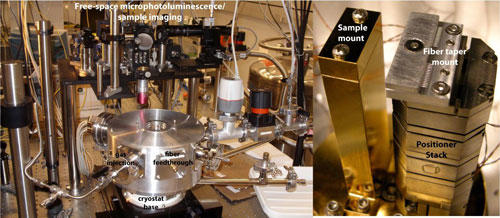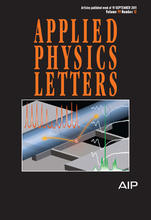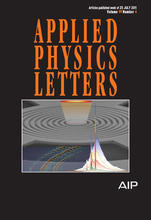Summary
Devices such as light-emitting diodes (LEDs) and lasers are typically based upon the accumulated emission from a large number of gas phase atoms, ions in solids, electron-hole pairs in semiconductors, or other fluorescence centers. In such macroscopic devices, the behavior of individual fluorescence centers is often hard to ascertain, but there are a number of benefits if this can be done. In addition to informing the design of traditional light-emitting devices, such single emitter spectroscopy is central to of a number of important new technologies. For example, future information processing systems might take advantage of single emitters as single photon sources, as memory nodes in a quantum network, or as low power optical transistors, while metrology may benefit from the sensitivity of a single emitter to its local environment.
Challenges in measuring the optical properties of single emitters can include low fluorescence levels and the separation of fluorescence from background light, both of which can be particularly problematic in some solid-state systems. The near-infrared, home to the important telecommunications wavelength band, can be a particular challenge due to the comparatively poor performance of low-light level detectors in this region. The goal of this work is to develop new tools and methods to perform efficient optical spectroscopy of a broad class of single solid-state emitters.
Description
For emitters embedded in semiconductors, such as a quantum dot in GaAs, the fluorescence collection efficiency is limited by the large refractive index contrast between the semiconductor in comparison to the surrounding air. This causes most of the light emission to remain trapped in the semiconductor, where it is inaccessible. Researchers have developed tools such as solid immersion lenses and nanofabricated surface gratings and optical microcavities as ways to more out-couple the emission.
Our approach is based on a different technique, using an optical fiber taper waveguide fabricated out of standard telecommunications optical fiber. The fiber diameter starts at 125 micrometers, standard for a single mode optical fiber, and gradually decreases to about 1 micrometer before increasing back to 125 micrometers. This structure is positioned so that its narrowest section is near the semiconductor material containing the quantum dot. When the quantum dot emits light, some fraction of that emission will be collected through the fiber taper waveguide. This fraction can be large because the fiber taper provides access to that light which is normally trapped in the semiconductor. Furthermore, because the input and output are standard optical fibers, interfacing with high performance sources, detectors, and other optical elements is straightforward.

To understand the limits of this technique, we have performed detailed numerical electromagnetic simulations, and have determined that it may provide a factor of ten efficiency improvement compared to traditional methods using lenses. Moreover, we have also found that if we house the emitter in a specially-designed on chip waveguide (Fig. 1), and then probe this combined system with the fiber, the results are improved further, with efficiencies approaching 70% predicted. Furthermore, this system has been optimized to allow us to perform resonant spectroscopy, which can provide significantly better spectral and temporal resolution while unveiling qualitatively different physical behavior. We have also found that this probing technique has applicability to different geometries and material systems, for example, colloidal quantum dots or single molecules embedded in thin dielectric films.
Experimental implementation of these approaches is in progress. We are collaborating with colleagues at the University of Rochester to interrogate single semiconductor quantum dots. Part of our work at NIST involves the development of a customized low temperature optical characterization setup (Fig. 2). This cryogenic fiber taper probe setup combines traditional free-space microphotoluminescence measurements with fiber-based photoluminescence and transmission spectroscopy, in an environment in which a sample can be cooled down to a temperature of about 6 K. The control of temperature is needed to understand and control dephasing processes in the devices. The detailed information provided by these measurements will be used to enhance our ability to understand and measure their properties of single quantum emitters when modified by the effects of nanofabricated photonic structures such as optical cavities.

Finally, we are working with colleagues at NIST's Information Technology Laboratory (ITL) on using frequency upconversion to address some of the challenges of single emitter spectroscopy at near-infrared wavelengths. Frequency upconversion is a process in which two optical fields combine in a nonlinear material to generate light at a frequency equal to the sum of the two input frequencies. Its relevance to single quantum dots is in two primary technical areas. One is in the development of detectors with single-photon level sensitivity. While the near-infrared is home to the telecommunications wavelength band in which low-loss transmission of light through optical fibers is optimal, detection of ultra-low light levels at these wavelengths is a challenge. Frequency upconversion to near-visible wavelengths for which detectors are relatively mature is one method to circumvent this issue. Beyond detection, upconversion can be used to connect different quantum systems operating at different energies, for example, solid-state quantum dots in the near-infrared with trapped atoms or ions in the near-visible. Characterizing the sensitivity of the upconversion process and the quantum properties of the upconverted light is a focus of our current work.
Selected Publications


- Bright single-photon emission from a quantum dot in a circular Bragg grating microcavity, S. Ates, L. Sapienza, M. Davanco, A. Badolato, and K. Srinivasan, IEEE Journal of Selected Topics in Quantum Electronics 18, 1711 –1721 (2012).
NIST Publication Database Journal Web Site - Efficient quantum dot single photon extraction into an optical fiber using a nanophotonic directional coupler, M. Davanço, M.T. Rakher, A. Badolato, and K. Srinivasan, Applied Physics Letters 99, 121101 (2011).
NIST Publication Database - A circular dielectric grating for vertical extraction of single quantum dot emission, M. Davanco, M.T. Rakher, D. Schuh, A. Badolato, and K. Srinivasan, Applied Physics Letters 99, 041102 (2011).
NIST Publication Database - Fiber-based cryogenic and time-resolved spectroscopy of PbS quantum dots, M.T. Rakher, R. Bose, C.W. Wong, and K. Srinivasan, Optics express 19, 1786-1793 (2011).
NIST Publication Database Journal Web Site - Hybrid Gap Modes Induced by Fiber Taper Waveguides: Application in Spectroscopy of Single Solid-State Emitters Deposited on Thin Films, M. Davanço and K. Srinivasan, Optics Express 18, 10995-11007 (2010).
NIST Publication Database Journal Web Site - Fiber-Coupled Semiconductor Waveguides as an Efficient Optical Interface to a Single Quantum Dipole, M. Davanço and K. Srinivasan, Optics Letters 34, 2542-2544 (2009).
NIST Publication Database Journal Web Site - Efficient Spectroscopy of Single Embedded Emitters Using Optical Fiber Taper Waveguides, M. Davanço and K. Srinivasan, Optics Express 17, 10542-10562 (2009).
NIST Publication Database Journal Web Site - Single quantum dot spectroscopy using a fiber taper waveguide near-field optic, K. Srinivasan, A. Stintz, S. Krishna, and O. Painter, Applied Physics Letters 91(9), 091102 (2007).

